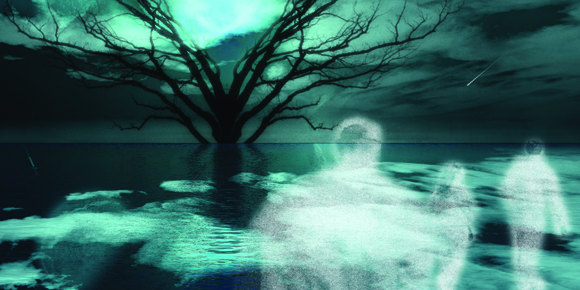Halloween, when spirits roam the earth, is but a few days away.
Since these spirits are abroad on this night, it could be wise to avoid places that might have a special appeal for them — places like Cannibal Lake, Deadman’s Island, Ghost Island, Little Graveyard Point, and Phantom Lake, all located in Manitoba.
More than 30 Manitoba places have scary names. Even some aboriginal names, when translated, point to creepy happenings. For example, Osakeeweepatheehawin Point means, “An old man was making fire and wendigo crept up on him.”
The First Nations consider a wendigo to be an evil spirit. Both Saultaux and Cree believe the wendigo are cannibals.
The many variations of the word “wendigo” means we don’t always recognize it in place names. Some versions are windigo, witiku, weetago, wehtigo, wetikoo and wetigo. Thus, Wetikoweskwatten is “devil’s doorway.” We also have Windigo Lake, Wendigo Beach, Island, and Lake, as well as Wendigo Point. Wetigo Hills, east of God’s Lake, when translated from the Cree, become “Cannibal” or “Devil Hills.”
The devil often pops up in English place names too: Satan’s Creek, Devil’s Island, Devil’s Creek, Devil Narrows, and Devil’s Swamp.
Manitoba is far from the only Canadian territory with place names that seem like areas to avoid on Halloween.
If Lake Erie comes to mind, forget it. Although Erie sounds like “eerie” (strange; weird), the words are not related. Erie, as it pertains to the lake, is an abbreviation of Erielhonan, a word meaning “long tail” in the Iroquoian language.
However, we do find Spook Lake in Ontario and Spooks Point in British Columbia. Also in B.C., there’s Ghost Mountain. The Northwest Territories has Old Lady’s Ghost Creek while Alberta offers Ghost Lake. Phantom Beach can be found in Saskatchewan.
Newfoundland and Labrador, probably reflecting the perils of a seagoing culture, have Deadman’s Bay, Coffin Cove, and Isle au Morts (Isle of the Dead).
Pointe aux Trembles, Quebec, should make us shiver about visiting there on the night when ghosts prowl. But the name is a reference to the trembling aspen that grow there and has nothing at all to do with occurrences that make us tremble with fear.
In fact, many scary place names have equally tame origins. Phantom Lake is south of Flin Flon on the Manitoba-Saskatchewan border. It’s said that long ago an HBC employee vanished there without a trace. This mysterious disappearance caused people to think of him as a phantom.
Slasher Bay is another example. It’s not named for some Jack the Ripper kind of criminal. Slash is the debris that remains on the ground and in nearby waterways following logging operations.
Deadman’s Island in Moose Lake got its name because a fisherman once drowned there. Bloodvein River, Bay, and Reserve are all named for the red streaks found in the river’s granite banks.
But Devil’s Island, at the southwestern end of Lake Winnipeg, is another matter. Local legend tells us, “If you point at Devil’s Island, you won’t get home tonight.”
So why don’t we play it safe and stay in Winnipeg for Halloween?



